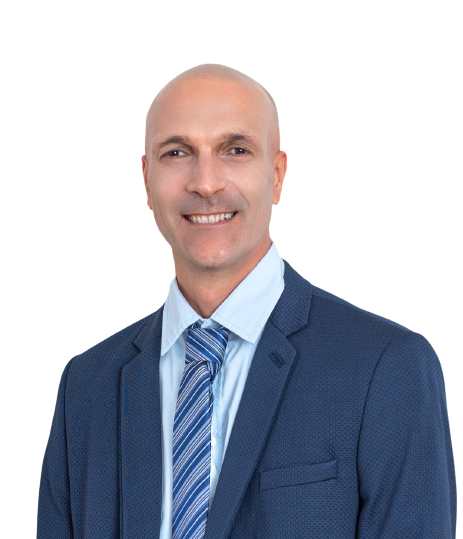About the global Bio-Med industry
The Bio-Med field is a booming industry that uses biological methods and medical solutions to develop products, devices, and health services for patients.
Between the two major industry contributors, The United States and Europe, over $140 billion is generated in revenues annually.
Within the Bio-Med industry, there are subsections of the biopharmaceutical and biotechnology fields as well as medical devices and E-Health.
While these fields use the newest technology and research to create innovative products, the industry is highly regulated, leading to product delays in the public market.
As the world changes amid the pandemic, the Bio-Med industry advances concurrently, increasing life expectancy and quality of life and supplying more effective and safe medical treatments than ever before.
In the following paragraphs, we will summarize some of the most promising trends in the Bio-Med industries, including virtual reality, gene editing, wearable devices, and more.
1. Tissue engineering
Tissue engineering is the process of growing tissue cells using technology and manipulations. Tissue engineering can be used to create entirely new organs or “patch up” existing diseased or injured tissues in patients by using therapeutic strategies.
Therapeutic tissue engineering strategies include growing healthy cells from patient cells, donor cells, or animal cells of another species. These cells can be grown on scaffolds in or out of the patient’s tissues or isolated and grown in culture using incubators. Additionally, bioprinting technology can be used to 3D print different human tissues using bio inks. However, as a new technology, bioprinting faces many challenges due to the sensitive nature of cellular material. Creating durable bio inks to withstand the pressure of 3D printing has been a substantial obstacle for bioprinting technology.
In 2019, the tissue engineering market size was estimated at $9.9 billion and is expected to experience a CAGR of 14.2% over a 7-year period.
These therapeutic strategies have shown promising results in liver diseases, skin ulcers, and diabetes. Success has been most promising in the treatment of dermal conditions.
In these trials, stem cells have been isolated and differentiated into skin cells and can be used to help heal wounds and burns in patients. So far, many of these treatments are still in clinical trials, and the FDA has approved only a few.
Tissue engineering is a breakthrough innovation that will change the way patients receive treatment. The ability to grow tissues or organs from the patient’s existing cells minimizes the risk of rejection from the host body by the immune system compared to traditional organ transplants. Additionally, patients often have to wait years before receiving a donor, leading to many patients passing away while waiting for their organs. The ability to have organs “fixed” or lab-grown will greatly minimize the waiting time for patients and can help solve ethical issues that come along with organ donor waitlists.
2. Virtual Reality based medical software
Virtual reality (VR) is defined as:
“the computer-generated simulation of a three-dimensional image or environment that can be interacted with in a seemingly real or physical way by a person using special electronic equipment, such as a helmet with a screen inside or gloves fitted with sensors.”
In medicine, virtual reality can be used for various functions in diagnosing and treating different disorders. Virtual reality is replacing old ways of diagnosing an array of disorders.
According to fortune business, “The global Virtual Reality (VR) in healthcare market size was valued at USD 459.0 million in 2021. The market is projected to grow from USD 628.0 million in 2022 to USD 6.20 billion by 2029” which suggests that VR is an extremely quick-growing and profitable field in the health care industry.
VR is a preferred method of diagnosis due to the fact it can be used for earlier detection of certain disorders, medical conditions, and diseases, and therefore patients can have an earlier intervention.
VR has been used to predict falls in elderly patients, diagnose mental health disorders, and more. VR can also be used as a treatment or therapy for different disorders, including anxiety and chronic pain.
Physicians have been taking advantage of VR by using it to train new physicians, plan surgeries, and perform surgeries on-site and even remotely. Physicians trained using VR have been shown to make significantly fewer errors than traditionally trained doctors (the guardian).
Robotic surgery integrates the use of augmented reality and robotic capabilities with traditional surgery. Surgeons use monitors to view the surgical site and control robotic tools to perform surgery on the patient.
Gynecology has made significant advances in robotic surgery and is used to perform many minimally invasive and more precise surgeries.
Robotic surgery has the ability to change the healthcare system and provide high-quality surgery to countries that may not regularly have access to it. Because surgeons can remotely control the robotic tools to perform surgeries, doctors could perform surgeries across borders as long as an onsite team can set up the robotics.
3. AI-based medical software
Artificial intelligence (AI) is reshaping everyday technology from self-driving cars to customer service and now to medicine. Artificial intelligence is the process of “teaching” computers to perform tasks for which human intelligence is typically needed.
By learning from previously analyzed data and patterns, AI can develop algorithms that predict the future actions of the subject it studies. In medicine, this is very helpful for diagnostics as signs and symptoms of different disorders can be predictable and uniform by nature.
AI could potentially replace the need for physicians to complete the meticulous diagnosis process while also cutting out biases and mistakes that come with human error in the diagnosis process. This can increase accuracy in diagnosis and prevent patients from misdiagnosis and treatment.
Many Sofware as a Medical Device (SaMD) companies develop medical software as a service AI-based solutions all over the world. In the next few years, many will have their regulatory approval and be seen in the global markets.
4. Precision medicine
Precision medicine is specialized medicine for individuals which takes into account their specific factors such as:
- Environment
- Demographic
- Lifestyle
- Genes
This field is extremely promising as it can increase the chance of treatments successfully managing or curing different diseases and disorders because they are personalized for the specific individual.
In 2021, the precision medicine market was valued at $66.1 billion and is expected to grow to $140.69 billion by 2028.
Precision medicine challenges the traditional “one-size fits all” approach to treating patients. Diseases and disorders arise in different patients for different reasons, so prescribing all patients with the same treatment can be ineffective. This is why we do not often see high efficacy in “one-size fits all” treatments.
Precision medicine increases the safety and effectiveness of treatments and allows patients to go through fewer unsuccessful treatments before they find one that works for them.
Precision medicine solutions will be the pharmaceutical industry’s future, but the cost of this kind of treatment is still unclear.
5. Gene editing
Gene editing is the science of modifying mutant genetic sequences in diseases with a known genetic sequence.
While there are many ways to modify DNA genetically, the CRISPR/Cas9 system has recently gained much attention for its ability to excise genes with high efficacy.
The CRIPR/Cas9 system is a prokaryote adaptive immune system function that allows it to cut out foreign material that may integrate into its genome. Scientists have hijacked this system to target specific genes cut out. In addition to editing, CRISPR can be used to edit gene regulation, epigenome editing, base editing, RNA targeting, and more.
CRISPR first entered the clinical trial process in 2016 when a patient was treated for lung cancer. Since then, CRISPR has improved in quality and efficacy and has been used in multiple clinical trials over the years for different diseases.
Most CRISPR trials are still in their early stages and far from FDA approval. As clinical trials continue to have successful outcomes, we hope that CRISPR can start being used to treat serious genetic disorders in humans.
6. Medical wearable devices
Healthcare and medical wearable devices are being used to track and treat numerous diseases and disorders such as cardiovascular diseases, Alzheimer’s, and more.
These E-Health wearables are part of the digital health field and come in many forms, such as skin-based wearables (tattoo, textile, biofludic) or device wearables.
Medical wearables have the ability to track patient behaviors and essential health-related parameters monitoring and then predicting future behaviors and/or health problems, allowing to prevent and/or treat them on time. Medical and healthcare medical device solutions can help patients manage their symptoms by using drug delivery systems or giving the patient notification if they are about to have a flare-up of symptoms.
In the midst of the COVID-19 pandemic, fitness awareness and at-home healthcare options skyrocketed, leading to major growth in the wearable devices market. There is a difference between lifestyle wearables devices and FDA/CE mark-approved medical and healthcare wearables.
By 2026, the medical wearable device market is expected to hit a value of $30.1 billion. However, it must overcome some significant challenges, including regulatory ones, before achieving this goal.
Patient information security is a top concern within the industry as patients must give sensitive information to use these devices, and this kind of information must be used and kept carefully and meet additional information security regulations such as HIPAA, GDPR, ISO 27001, and others.
7. Nanomedicine
As defined by health Europa “Nanomedicine is a domain of medicine that utilizes the knowledge of nanotechnology to prevent and treat severe diseases such as cancer and heart diseases”. Nanotechnologies allow scientists to expose patients to microscopic materials such as DNA and nano-molecules that can attack and treat specific cells such as cancer cells.
Nanotechnology allows patients to minimize exposure to dangerous treatments such as chemotherapy or radiation.
Scientists and doctors continue to find new applications for nanomedicine, and the market is expected to grow to $261.06 billion by the end of 2023.
Summary
While these Bio-Med industry trends are relatively young in the research and development process, and many lack FDA and CE mark approval, they show great potential to grow their market size.
These new technologies and other innovative ones can improve the quality of life for many people struggling with different disorders and diseases and even possibly cure many diseases. Regulations within the Bio-Med field slow down the growth of the industry, and companies must be aware of these guidelines when innovating new technologies and methods.
For the product/Service to be approved by the global health authorities for market sales, the new technology must provide evidence for safety and efficacy and is equivalently or safer than existing technologies in the pharma, health, and medical markets.
This evidence must come from lab research, pre-clinical, and multiple clinical trials, which suggest that the new product/service is safe and effective. With more research, these innovative fields will change the bio-medical field as we know it today.








